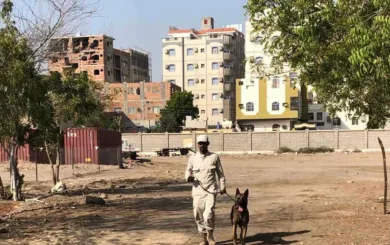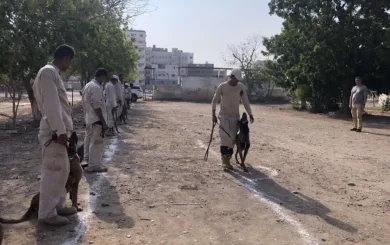After almost a decade of conflict in Yemen, around 18.2 million people in the country desperately need humanitarian assistance and protection services. The ongoing economic decline, crumbling public services and infrastructure, and the displacement caused by both conflict and climate-related disasters continue to fuel the humanitarian crisis. This crisis is exacerbated by increasing food and malnutrition insecurity, as well as the presence of explosive remnants of war. These remnants result in death, injury, and displacement, restrict access to agricultural land and resettlement, and hinder the possibility of finding lasting solutions.
Most of Yemen's population now resides in or near areas heavily contaminated by explosive ordnance. The contamination is extensive and includes landmines, improvised landmines, improvised explosive devices (IEDs), cluster munitions, and large air-dropped weapons. This complex contamination poses a daily threat to the lives and livelihood of civilians in Yemen while also obstructing humanitarian access and programming.
In 2022, the internationally recognised government of Yemen (IRG) requested and received a five-year extension of its Article 5 deadline until the end of March 2028. A baseline survey led by the Yemen Executive Mine Action Centre (YEMAC), representing the IRG (YEMAC-IRG), identified 239 hazardous areas covering approximately 52 square kilometres in the south. In the north, three international non-governmental organisations (NGOs) specialising in demining visited Sana'a in February 2023 to negotiate a memorandum of understanding (MoU) with the Houthi authorities. However, as of the first Quarter of 2024, these MoUs remain unsigned.
Funding for the United Nations Development Programme's (UNDP) emergency support program for mine action ended in June 2023 after nearly a decade of donor support. The UN recommends that donors should now directly fund implementing partners. Since April 2022, the UN Mission to Support the Hudaydah Agreement (UNMHA) has taken on a stronger coordination role, particularly in the Hudaydah governorate, to bolster the efforts of the UN country team led by UNDP in Yemen.
The complex challenges facing Yemen require continued international support and cooperation to mitigate the humanitarian crisis, address the explosive ordnance contamination, and find durable solutions for the people of Yemen.
Norwegian People's Aid in Yemen
Norwegian People's Aid (NPA) has been actively involved in Yemen’s IRG since 2017, focusing on addressing urgent humanitarian and protection needs. NPA's primary objective is to assist Yemen in meeting its obligations under the Anti-Personnel Mine Ban Convention by March 2028.
NPA's impactful initiatives in Yemen began in 2018 when they partnered with the UNDP and received funding from the Norwegian Ministry of Foreign Affairs (NMFA) to establish a mine detection dog (MDD) capacity for YEMAC. Training 12 skilled MDD handlers and their loyal canine partners, NPA paved the way for effective mine action operations.
In August 2023, NPA expanded its influence through a valuable partnership with the US State Department's PMWRA and the French FMFA. Leveraging its extensive international expertise, NPA collaborated closely with the Yemen Mine Action Coordination Centre (YMACC) and the YEMAC to implement successful mine action activities in Southern Yemen.
NPA's interventions in Yemen encompassed a diverse range of critical activities, including non-technical (NTS) and technical surveys (TS), clearance operations, explosive ordnance risk education (EORE), conflict preparedness and protection (CPP) initiatives, and the deployment of highly skilled MDD teams. This comprehensive approach maximised operational efficiency and impact.
NPA-implemented projects have covered highly conflict-affected governorates such as Al Dale, Hudieda, Marib, Taiz, Aden, and Abyan. These projects aimed to raise awareness and safeguard communities, saving lives and ensuring livelihoods.
- Explosive Ordnance Risk Education: 1,980 sessions
- Explosive Ordnance Risk Education: 48,083 Direct Beneficiaries (5,586 Women, 4,333 Men, 17,903 girls, 20,621 Boys)
- Cancelled through non-technical survey- 3.605,142 m2
- Area Reduced: 18,792 m2
- Technical survey: 31,024 m2
- ERW Cleared: 309,883 m2
- UXO located and removed: 126
- Convention on Cluster Munitions: Yemen is not a state party.
- Mine-Ban Treaty: Yemen is a state party; the clearance deadline is Mar 2028.
- Since 2004, there has been fighting between the internationally recognised government and members of the Ansar Allah group, also known as the Houthi movement.
- Over 8,700 people have been killed and over 50,000 wounded since the conflict began, many to imprecise bombing. Three million people have been forced to leave their homes. The UN has accused all parties to the conflict of attacks on hospitals, schools and markets and of preventing emergency services to reach civilians.
- Landmine Monitor Yemen






